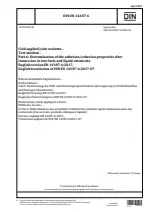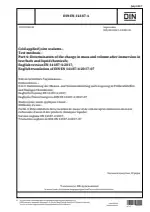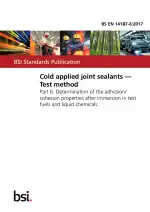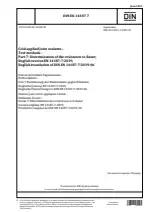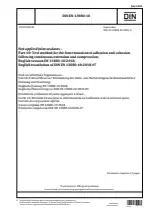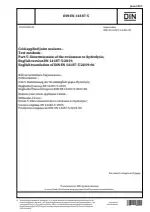Cold Applied Joint Sealants - Test Method - Part 6: Determination of the Adhesion/Cohesion Properties After Immersion in Test Fuels and Liquid Chemicals
Also Known As:
DIN EN 14187-6 is a standard that outlines a specific test method for determining the adhesion/cohesion properties of cold applied joint sealants after they have been immersed in test fuels and liquid chemicals. The purpose of this standard is to ensure that the sealants maintain their adhesive and cohesive properties even when they are exposed to harsh environments, such as those found in the presence of fuels or chemicals.
The test method described in this standard involves immersing the sealant samples in the specified test fuels or liquid chemicals for a specific duration. After the immersion period, the samples are examined to assess their adhesion and cohesion properties. Adhesion refers to the sealant's ability to bond to the substrate, while cohesion refers to the sealant's ability to maintain its internal integrity.
By subjecting the sealants to immersion in test fuels and liquid chemicals, this standard aims to evaluate their performance and suitability for use in environments where exposure to such substances is likely. This information is crucial for selecting the appropriate sealants for specific applications, ensuring their durability and effectiveness in challenging conditions.
| Descriptors | Adhesion, Chemicals, Cohesion, Cold application, Construction, Construction materials, Elongation, Health protection, Holding, Immersion, Immersion tests, Joint filling, Joint sealants, Joint sealings, Materials, Occupational safety, Properties, Road construction, Storage time, Storing temperature, Test specimens, Testing, Testing conditions, Testing devices, Checking equipment, Liability, Expansions |
| ICS Codes | 93.080.20 - Road construction materials |
| Language(s) | English |
| File Size | 952.3 KB |

